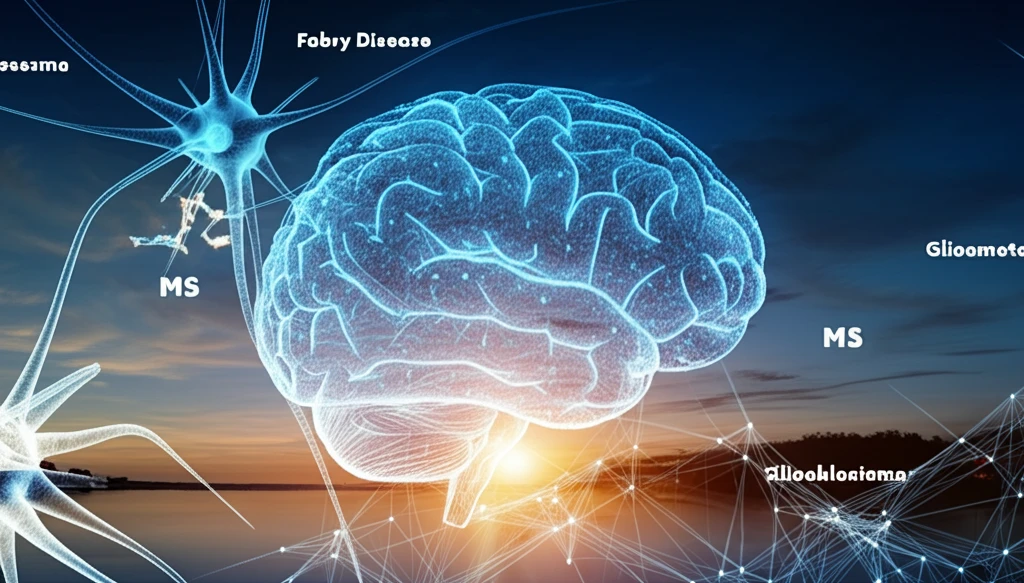
Beyond the Flare-Up: How to Take Control of Multiple Sclerosis and Other Neurological Conditions
"Unveiling the latest breakthroughs in managing MS, Fabry Disease, and Glioblastoma, tailored for a healthier, more informed you."
In the ever-evolving landscape of neurological care, staying informed about the latest advancements is crucial. This article breaks down recent findings and therapeutic options for managing Multiple Sclerosis (MS), Fabry Disease, Glioblastoma, and ADHS, providing you with the knowledge to navigate these conditions more effectively. We'll explore innovative approaches and practical insights, designed to empower both patients and caregivers.
For those living with MS, the focus has shifted towards achieving 'NEDA' – no evidence of disease activity. This comprehensive approach considers not just the absence of flare-ups, but also the prevention of disability progression and the reduction of measurable disease activity seen on MRI scans. Managing MS effectively means addressing all these aspects, with the goal of maintaining a high quality of life.
Beyond MS, we'll delve into lesser-known conditions such as Fabry Disease, often signaled by burning pain in the extremities. Early diagnosis and intervention can significantly alter the course of this inherited metabolic disorder. We'll also discuss new options for Glioblastoma, an aggressive form of brain cancer, and innovative treatments for ADHS, offering a comprehensive overview of the latest developments in neurological care.
Achieving 'NEDA': A New Standard in Multiple Sclerosis Care

The therapeutic goals for Multiple Sclerosis have evolved significantly in recent years, driven by advancements in treatment options. Professor Volker Limmroth from Cologne emphasizes the importance of achieving 'NEDA' (no evidence of disease activity) as a primary target. This goes beyond simply reducing the frequency of relapses; it encompasses a holistic approach to managing the disease.
- Relapse Freedom: Maintaining a period of at least one year without experiencing any relapses or exacerbations of MS symptoms.
- Disability Progression Freedom: Ensuring that there is no confirmed progression of disability, assessed over a period of twelve to twenty-four weeks. This indicates that the treatment is effectively preventing the long-term accumulation of neurological deficits.
- Absence of MRI Activity: Demonstrating the lack of new or enlarging lesions on magnetic resonance imaging (MRI) scans of the brain and spinal cord. This shows that the treatment is controlling the inflammatory activity associated with MS.
Empowering Hope Through Research
The information presented here offers a glimpse into the ongoing efforts to improve the lives of those affected by neurological conditions. By staying informed and proactive, patients and their families can work together with healthcare professionals to develop personalized treatment plans that optimize outcomes and enhance quality of life. Continued research and innovation offer hope for even more effective therapies in the future.
